Surface Pro (5th Gen) review: A 2-in-1 tablet you'll actually want to use
The new Surface Pro (5th Gen) from Microsoft finally achieves the original vision of a true 2-in-1 PC, and it's a blast to use.
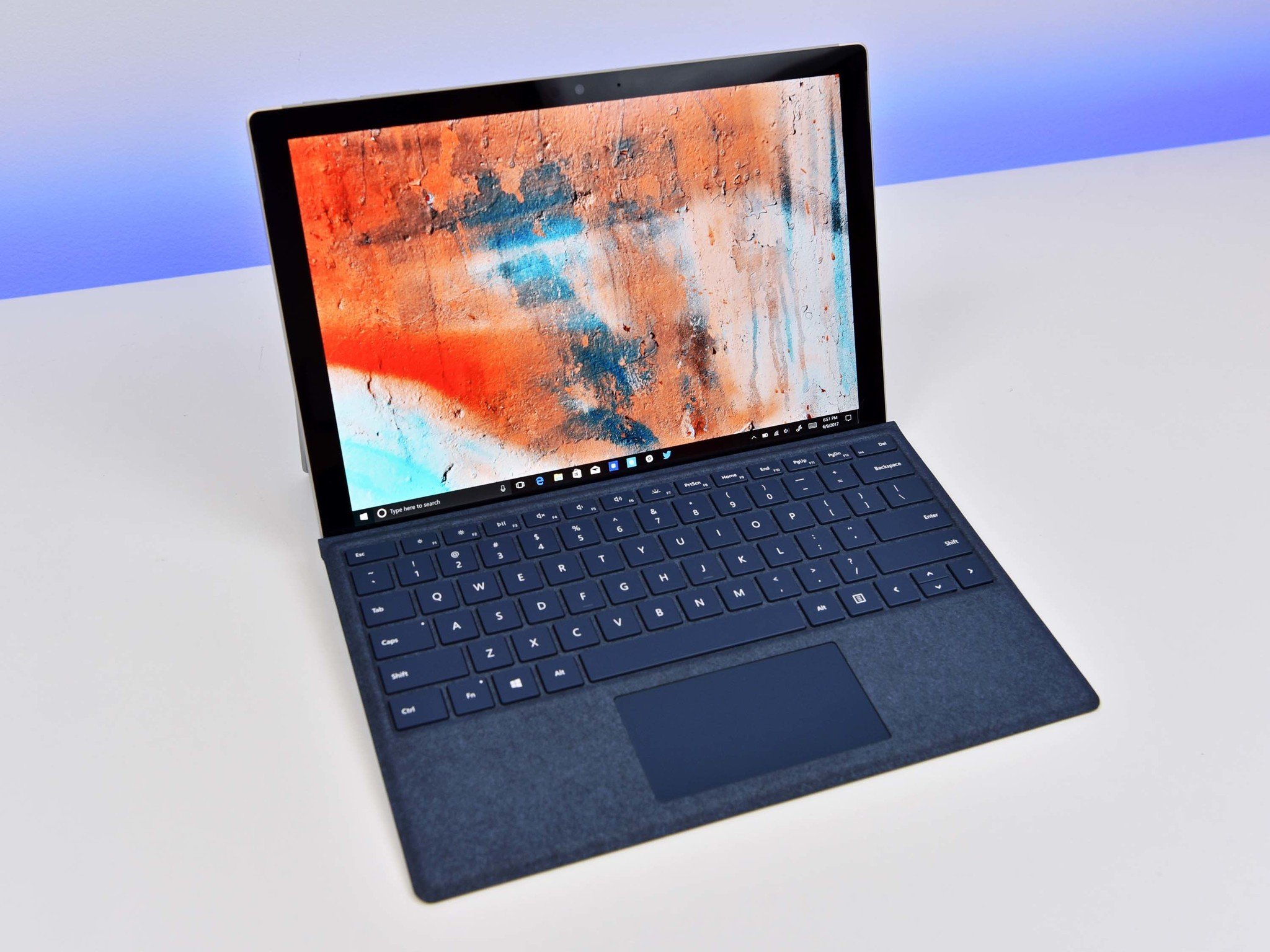
Ever since the Surface Pro was revealed in 2012 Microsoft has been trying to convince the world that a PC tablet with a floppy keyboard should be your laptop of choice. With the Surface Pro 3 and 4, that vision started coming into focus despite a few flaws.

After spending a few weeks with the new Surface Pro for 2017 (a.k.a. Surface Pro 5), I think Microsoft's dream is now fully realized. Never has the Surface Pro felt so complete, so well-rounded and balanced and it rightfully earns your attention.
About this review
Microsoft supplied a loaner Surface Pro for this review. The unit tested features a Core i7-7660U processor, with 16GB of RAM and 512GB of storage priced at $2,199. The package also included the Alcantara Surface Type Cover ($159) and new Surface Pen ($99) for a total of $2,457. Starting price of the new Surface Pro is $799 for a Core m3 with 4GB of RAM and 128GB of storage and maxes out a Core i7 with 16GB of RAM and 1TB of storage for $2,699 (plus Type Cover and Surface Pen).
Related: Surface Pro keyboards that cost less than Microsoft's Type Covers
All the power
Microsoft Surface Pro 2017 technical specifications
Like previous Surface Pro releases, Microsoft is offering numerous configurations based on three types of processors and various RAM and storage options. The display and chassis are otherwise the same on all versions.
Get the Windows Central Newsletter
All the latest news, reviews, and guides for Windows and Xbox diehards.
The processors are all seventh generation Intel "Kaby Lake" chips, and the high-end Core i7 version includes upgrade Iris Plus HD640 Graphics giving that that configuration even more power.
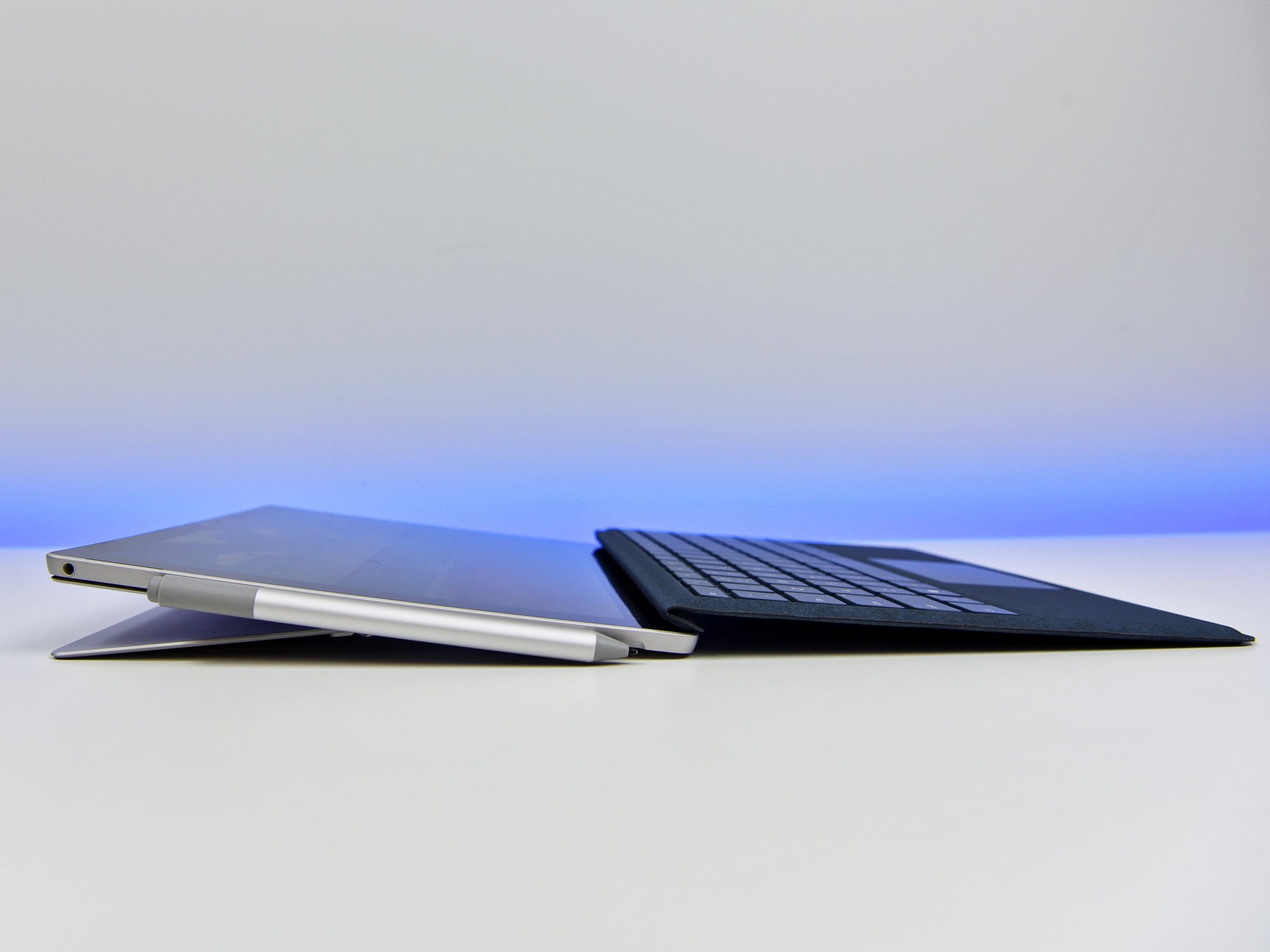
| Category | Specification |
|---|---|
| Display | 12.3-inch Pixel Sense display10 point multi-touch |
| Display Resolution | 2736 x 1824 (267 PPI)Aspect Ratio: 3:2 |
| Software | Windows 10 |
| Processor | Seventh Gen Intel Core m3 7Y30Seventh Gen Intel Core i5-7300USeventh Gen Intel Core i7-7660U |
| Storage | 128GB, 256GB, 512GB, or 1TB Solid State Drive (SSD) |
| Memory | 4GB, 8GB or 16GB RAM1866Mhz LPDDR3 |
| Graphics | Core m3 and Core i5: Intel HD graphics 620Core i7: Intel Iris Plus Graphics 640 |
| Rear Camera | 8.0MP autofocus camera with 1080p HD video |
| Front Camera | 5.0MP camera with 1080p HD videoWindows Hello face-authentication |
| Speakers | Stereo speakers with Dolby Audio Premium |
| Ports | One full-size USB 3.0Mini DisplayPortHeadset jackSurface ConnectmicroSDXC card reader |
| Sensors | Ambient light sensorAccelerometerGyroscope |
| Network | Wi-Fi: IEEE 802.11 a/b/g/n/ac compatibleBluetooth Wireless 4.1 technology |
| Security | TPM chip for enterprise security |
| Battery Life | 13.5 hours of use |
| Pen | Surface Pen |
| Weight | 1.69 lbs to 1.73 lbs (768 g to 784 g) |
| Dimensions | 11.50 inches x 7.9 inches x 0.33 inches (292 mm x 201 mm x 8.5 mm) |
The catch with any Surface Pro is that the practically essential Surface Type Cover is not included. That adds $129 for the Surface Pro 4 era covers (Black, Blue, Red, Teal, Bright Blue) to $159 for the new Surface Pro Signature Type Cover with Alcantara (Burgundy, Cobalt Blue, or Platinum) to the final cost.
- Why isn't the new Surface Pro named 'Surface Pro 5?'
- Why the new Surface Pro's fanless Core i5 is both a serious processor and a great option
Additionally, for the first time, Microsoft is not including the Surface Pen in the box. Microsoft says that only 30 percent of Surface buyers used the pen, and the fully upgraded pen increased in cost from $59 to $99. Plus now you can mix-and-match colors between the Pen and Type Covers.
Finally, the Core m3 and now Core i5 versions of Surface Pro are both completely fanless. Only the Core i7 maintains a fan, albeit redesigned and now quieter. Towards the Fall, Microsoft is expected to release another model of Surface Pro that supports 4G LTE.
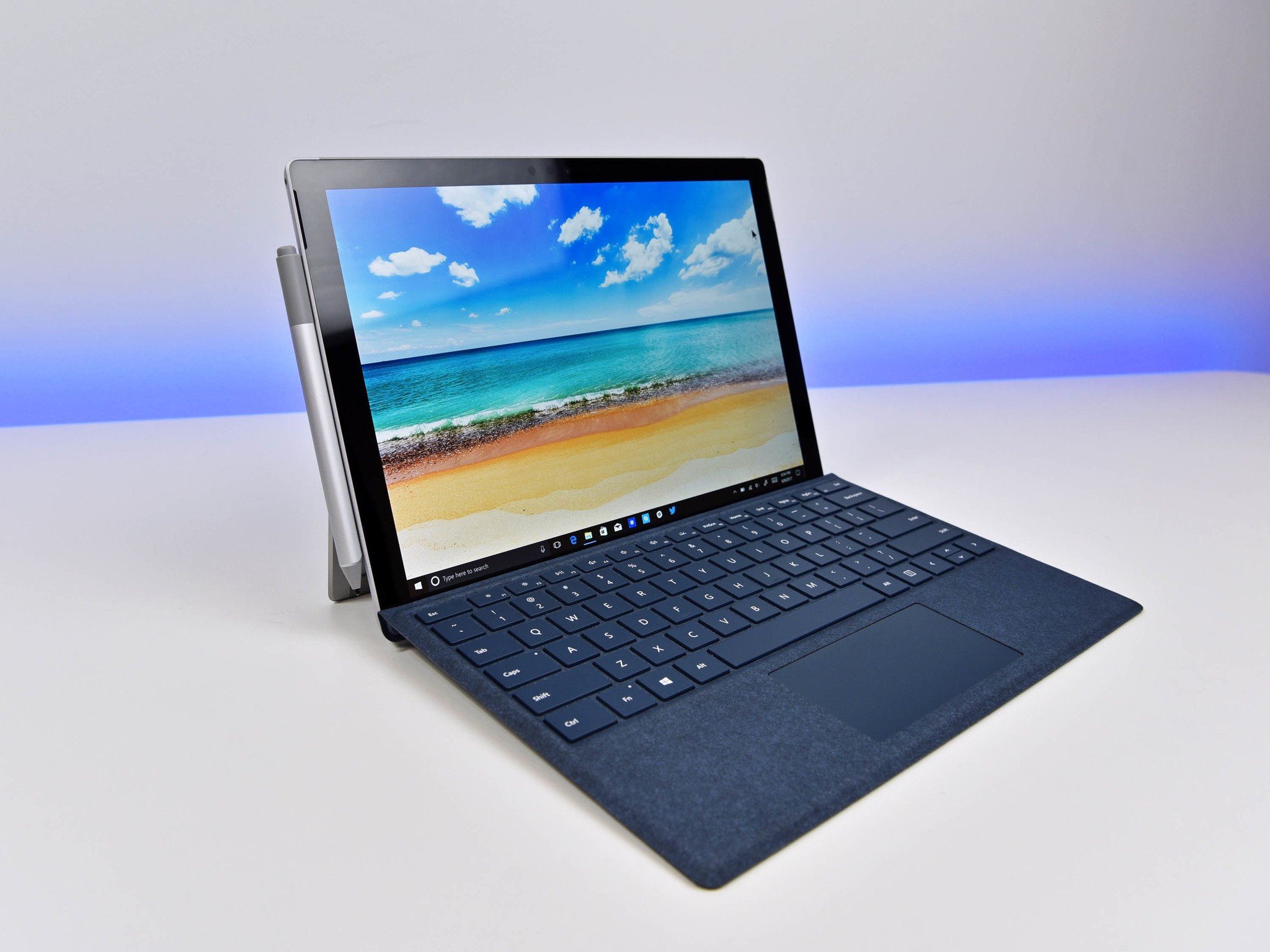
Familiar but all-new
Microsoft Surface Pro 2017 design
Not much has changed regarding the design of the Surface Pro 2017, and in many ways, it still looks a lot like the Surface Pro 3. That's a good thing, as the overall execution and layout are perfect — except maybe for that headphone jack that near the top left corner of the display.
The chassis is still magnesium and solidly built with no flex or creaks. The power and volume control keys are found on the upper left of the tablet – they feel a little more stable this time around too, with less rattle. On the right-hand side are the ports: one USB Type-A, one mini-DisplayPort, and one Surface Connect for plugging into power and the optional Surface Dock.
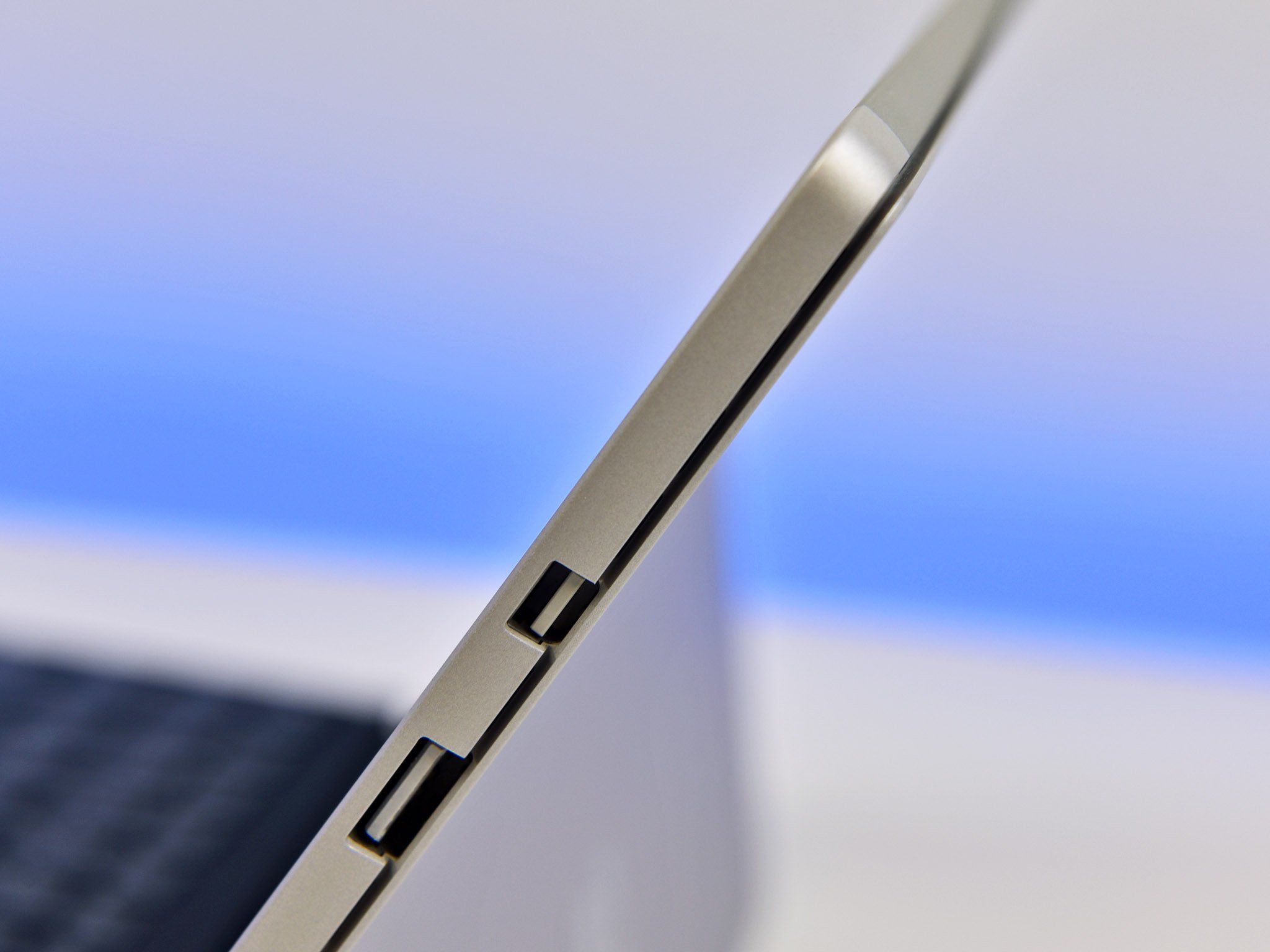
Somewhat controversially, there is no USB Type-C slot. Microsoft plans to release an adapter that fits into the Surface Connect port later this year though as a compromise. That dongle will reconfigure that power and data port into USB Type-C for those who want it. I won't dwell on the topic as it has been discussed endlessly, but if you want Type-C and Thunderbolt 3, you may want to look at offerings from HP or Dell instead.
Why Microsoft's new Surface Pro doesn't have a USB Type-C port
There are, however, numerous smaller changes that help make the 2017 Surface Pro even better than older models. These include a restructured chassis with smoother and more rounded edges, thinner radial vents with a new "whisper quiet" thermal system, a kickstand that now tilts back a full 165 degrees, and blacked-out Windows Hello IR lenses that better blend into the bezel. All told, we're looking at more than 800 customized internal parts.
Not much has changed with the design of the Surface Pro 2017. That's a good thing.
Although these alterations may seem trivial on paper when using the Surface Pro daily, I appreciate them nonetheless. The less harsh edges and marginally slimmer vent around that edge help the new Surface Pro feel like a more typical tablet, which betrays the powerful Core i7 processor and 16GB of RAM beneath. At just 8.5mm thin it is still remarkable that this is a full Windows PC.
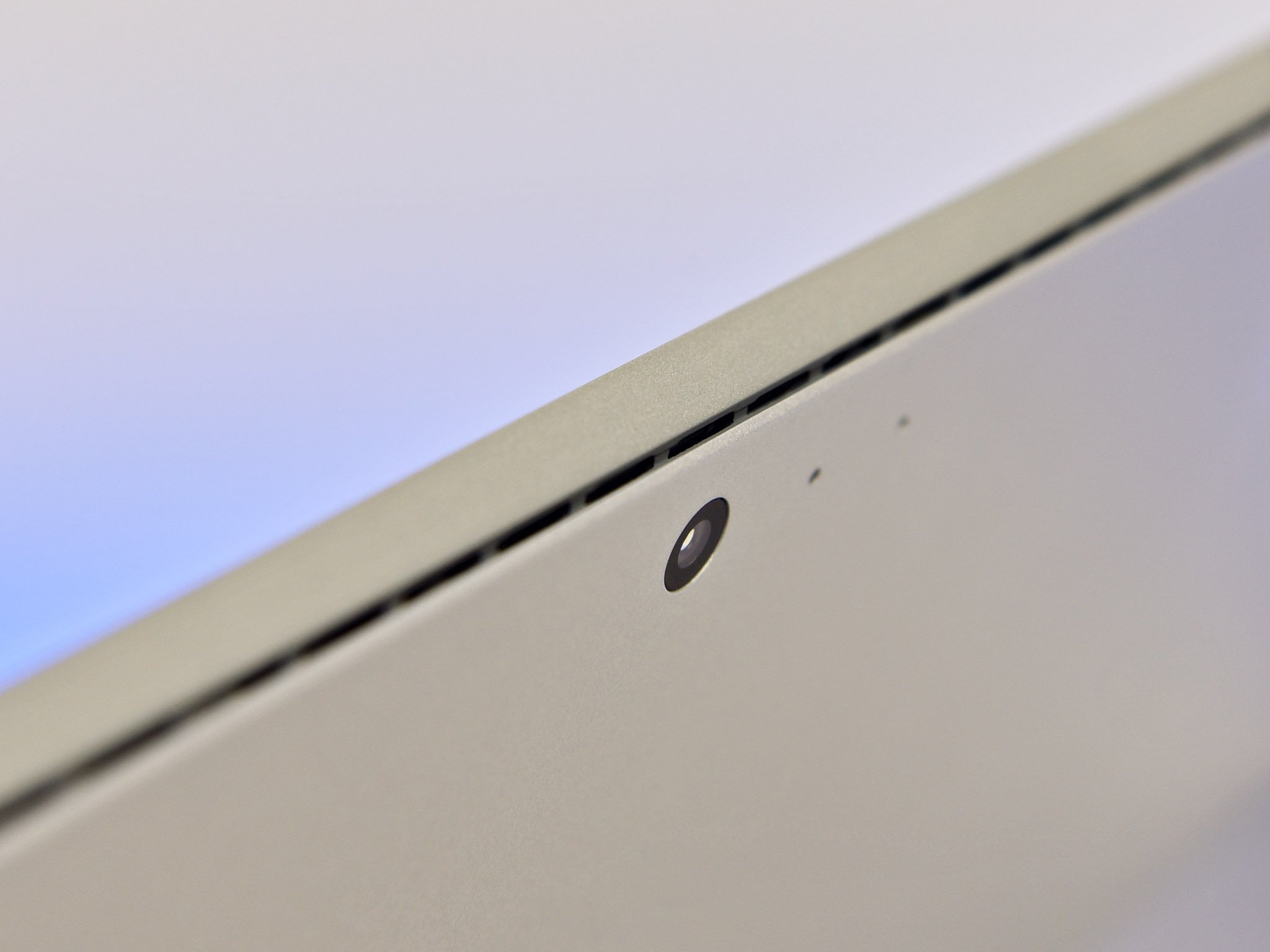
Not only do I have no complaints about the Surface Pro 2017's design I feel like it is essentially perfected at this point. Everything is balanced for weight, there are no screws or seams, and even the radio antenna on the top blends in nicely. With fewer visible grates, the new radial vent looks, well, less vent-y.
Surface Pro still stands out from all 2-in-1 PCs and tablets, and it is just a handsome looking device.
Lots to love
Microsoft Surface Pro 2017 display
For 2017, Microsoft is keeping the 12.3-inch 2736 x 1824 (267 PPI) Pixel Sense display for the Surface Pro at the ideal 3:2 aspect ratio. It is an IPS LCD with ten-point multi-touch with glossy edge-to-edge glass. At first glance, the screen doesn't seem all that different than the 19-month-old Surface Pro 4, but a lot has changed with its production and quality.
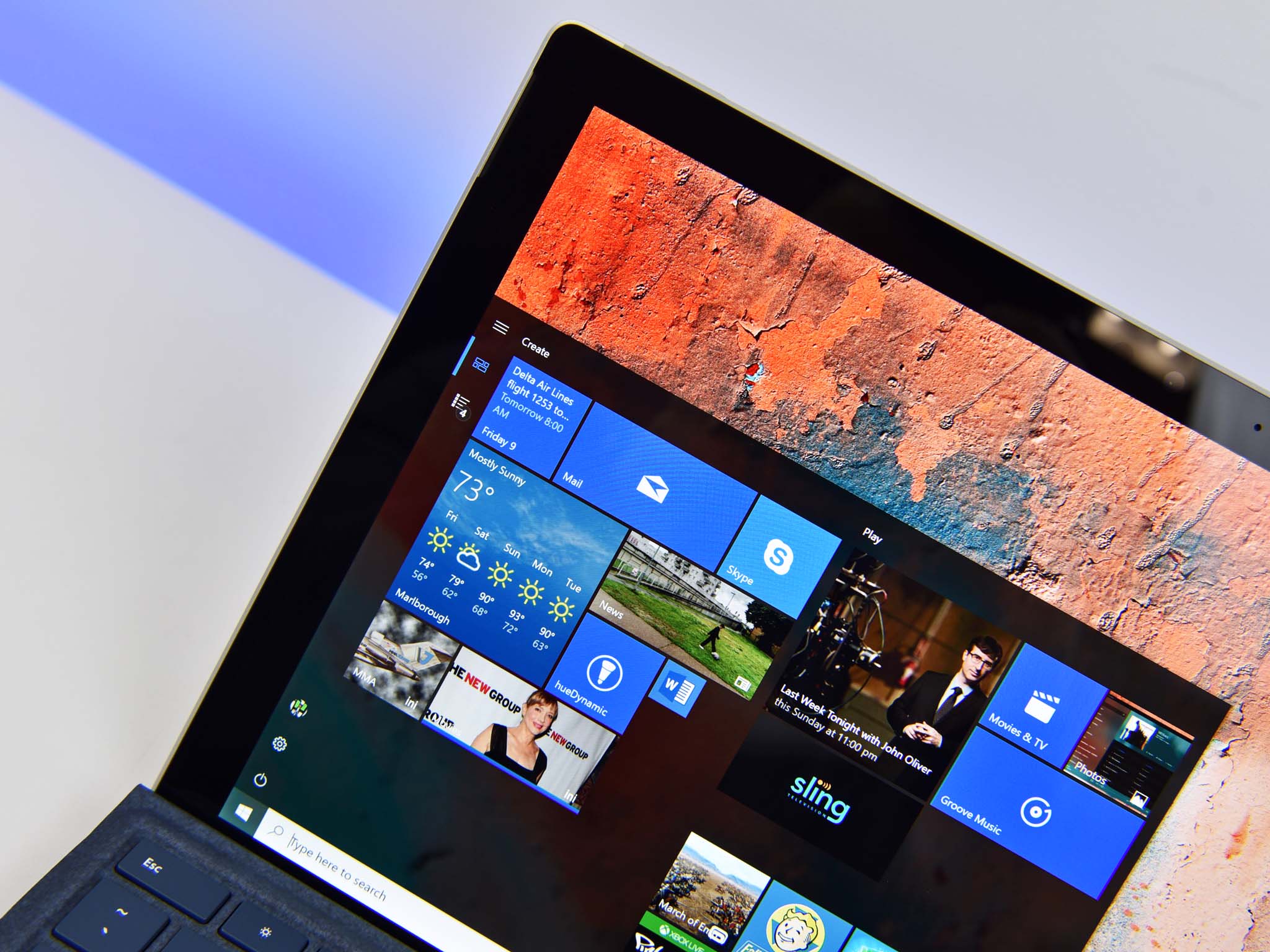
The biggest change with the new Surface Pro are the new color profiles, which are like those found in the Surface Studio. Microsoft carried over a lot of what it learned from making the Surface Studio's display to the Surface Pro. There are only two profiles right now – sRGB and Enhanced – with the former aimed at professionals who need a neutral color palate for photo or video editing (or those who prefer more "naturally" saturated colors).
The second one, Enhanced, is what I imagine most people will opt for — especially if you use the Surface Pro to consume media like movies. Enhanced saturates the display, giving an almost HDR-look that resembles AMOLED or even Sharp IGZO screens. The new screen pops with a full-color gamut. Interestingly, neither color profile is found in the new Surface Laptop.
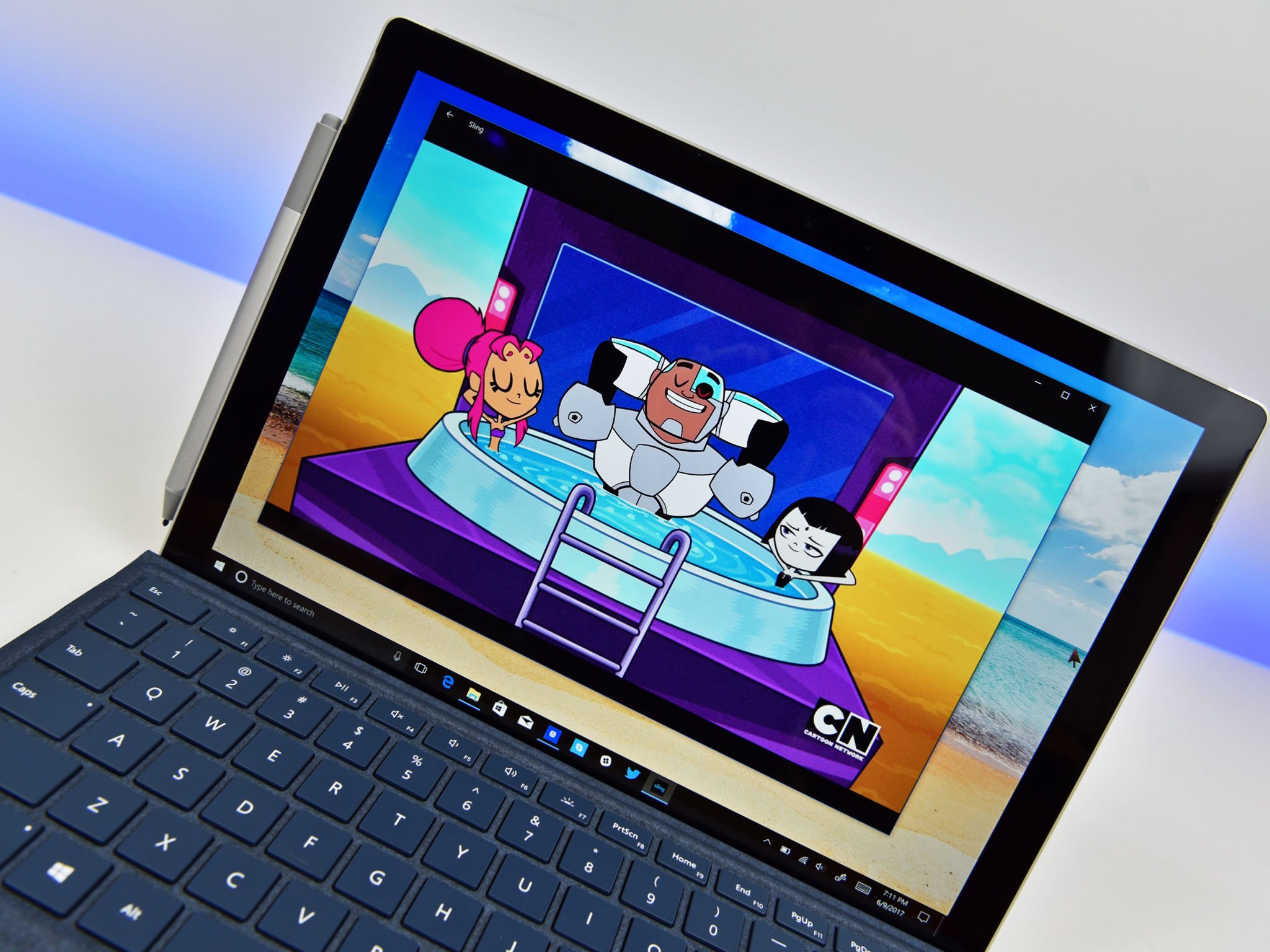
Color accuracy is also very good at 97 percent Adobe sRGB and 75 percent Adobe RGB during a color calibration test. That is about a one percent increase from the Surface Pro 4, which was found to have 96 percent Adobe sRGB. While excellent and above average those numbers are below the new Surface Laptop, which has 99 percent Adobe sRGB and 80 percent Adobe RGB. It's known that those displays while similar are different with Surface Pro having better support for Surface Pen.
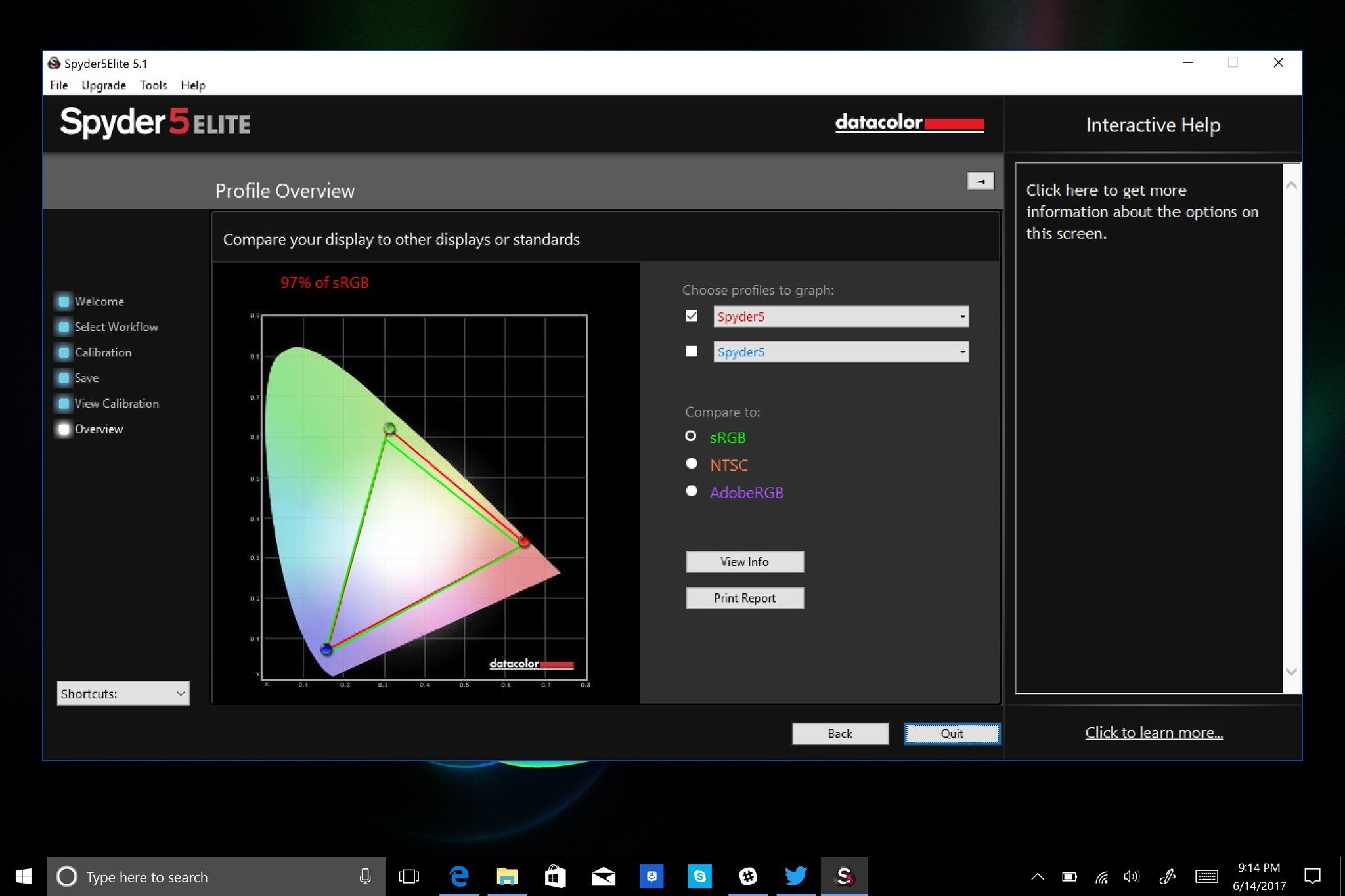
Another point worth mentioning is the lack of LED hot spots near the edge of the display. While all IPS screens have some form of edge light bleed, Surface devices in the past have been prone to larger and noticeable bright areas. The review unit I tested did not suffer from any hotspot issues, and the Surface team claims to have solved that manufacturing problem.
The display bezels are the same size as with the older Surface Pros, and while the trend in PCs is to make bezels as thin as possible, the Surface Pro is first a tablet. Those edges help in holding the Surface Pro and not activating the display — in addition to hiding various radio components including the antenna. I have no problem with bezels on tablets like this, but you'll be disappointed if you were hoping for a Dell Infinity Edge screen here.
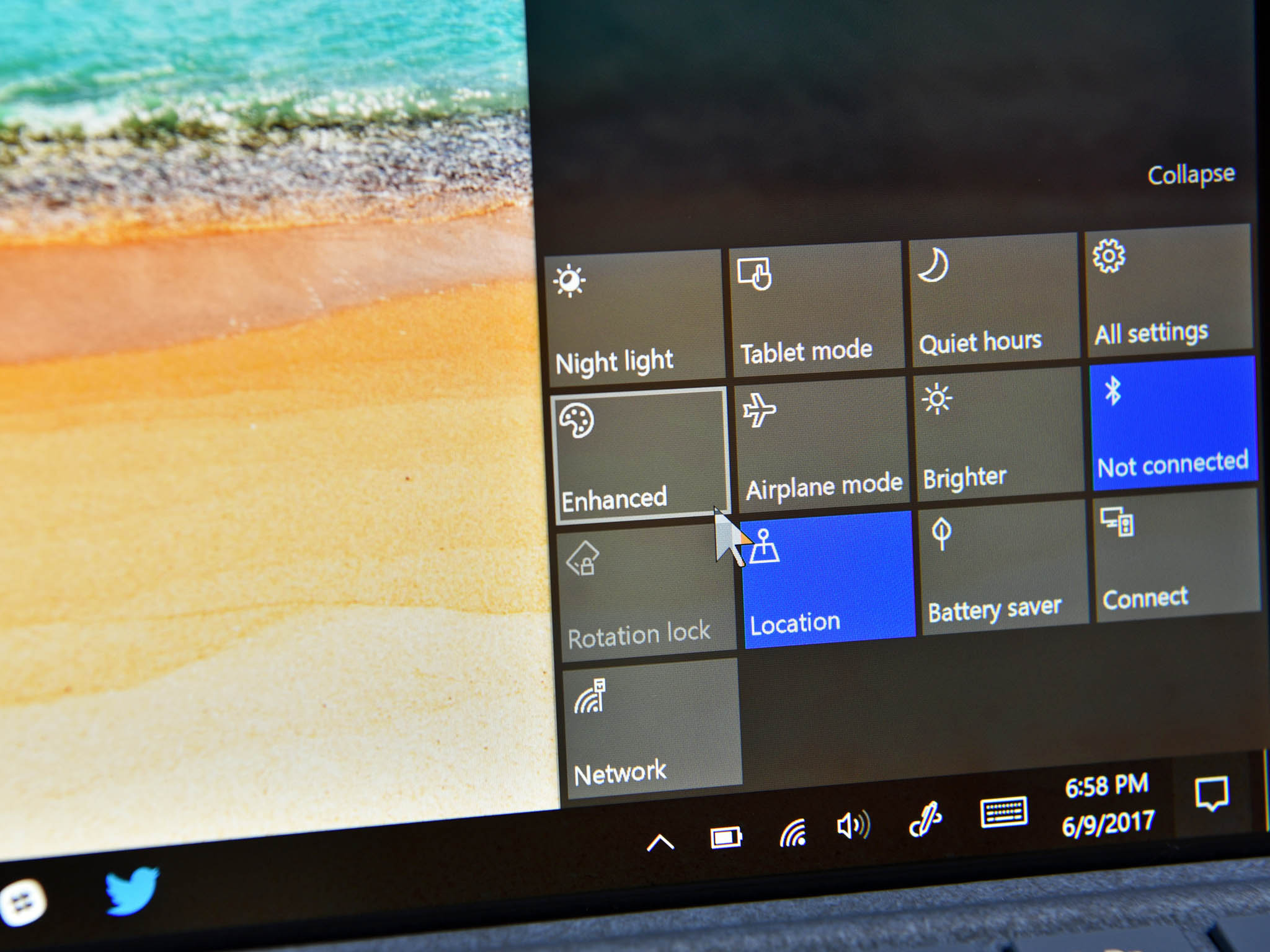
Overall, the Surface Pro's screen is nearly perfect. The 12.3-inch size may not be ideal for those who prefer something larger, but that is a personal preference. The colors, brightness, clarity and the new enhanced color profile make this display the best Surface Pro yet. It's just beautiful.
Fast, smooth, and entirely optional
Microsoft Surface Pro 2017 Pen inking
The Surface Pen has also been reworked for 2017 with 4,096 levels of pressure — four times the sensitivity of the previous pen. Activation force – the amount of pressure required before the pen activates – is down to a mere nine grams. For the first time in a Surface Pen, you'll now find tilt and rotation support, letting artists create more life-like pencil strokes for shading.
All of that is great, but it is the reduced latency that is the star of the show. Latency is how fast the ink registers on display after a pen stroke – the faster you draw, the more noticeable any lag becomes, and the more our brains sense that there's something artificial happening in front of us. After all, real-world analog pens have zero latency. Dropping from 40 milliseconds to just 21 is a massive accomplishment, and a lot of it is due to the new co-processor found in the Surface Pro's display that connects the GPU to the screen's digitizer and helps speed up pen calculations.
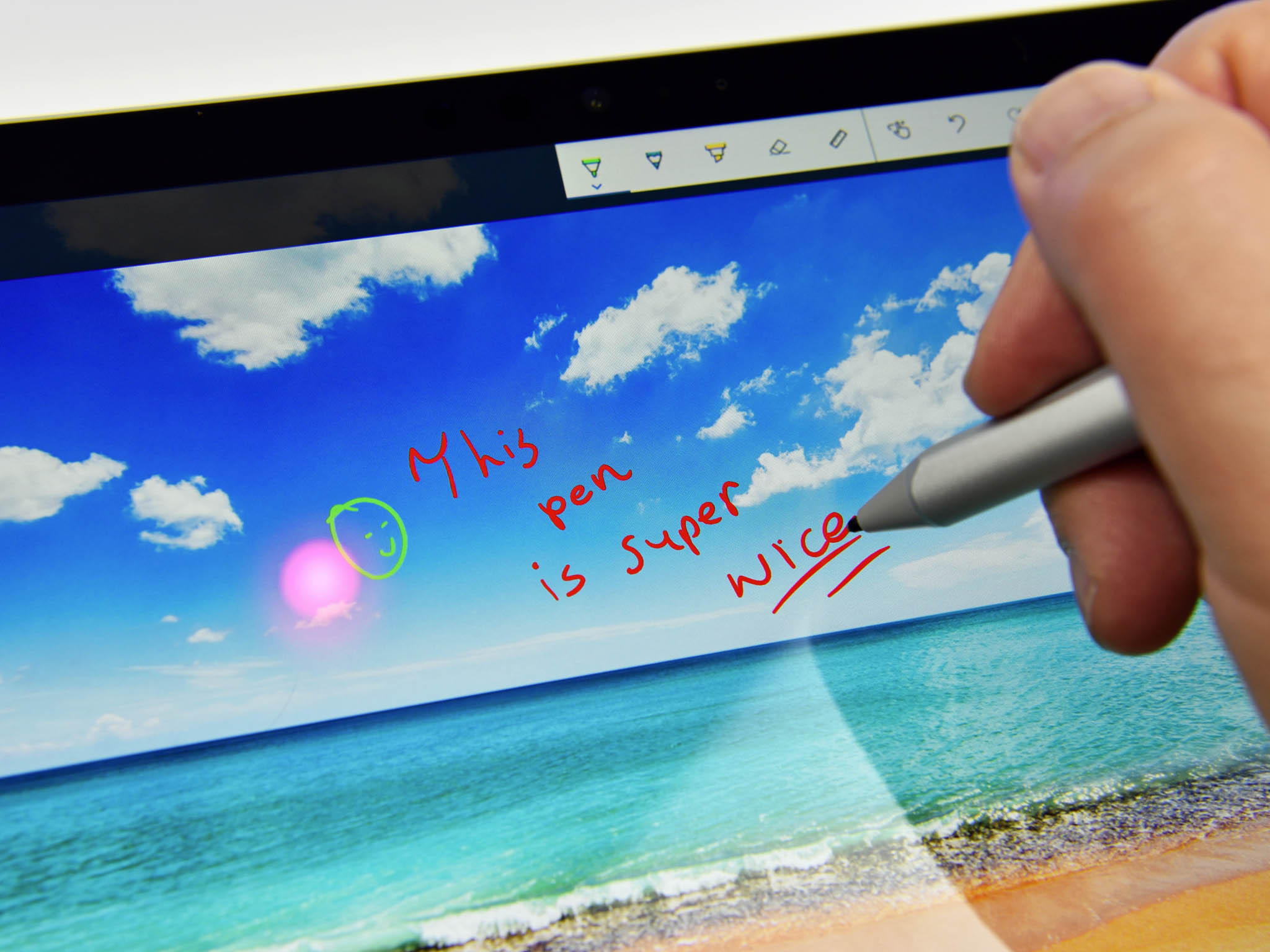
The reduced latency is fantastic. The new Surface Pen on the new Surface Pro is much more fluid, smooth, and lifelike compared to the older version. It makes me want to use the pen more (notwithstanding my complete lack of artistry).
Surface Pen battery life is still estimated to be one year for the single AAAA battery based on regular usage every day.
The new Surface Pen on the new Surface Pro is much more fluid and smooth — and makes me want to use the pen more.
To be clear, all newer Surfaces – including Surface Pro 3, Pro 4, Book, and Studio – will see improvements with pressure (up to 4,096 levels), fine-tuning of activation force and improved latency. That will be accomplished through driver updates over time. Tilt support will be coming to Surface Book and Surface Studio as well with a software update.
Only the new Surface Pro gets all those benefits at the 21ms latency level on day one, making it the best Windows Inking experience around. Without the new coprocessor, it's unlikely older Surface devices will be able to catch up.
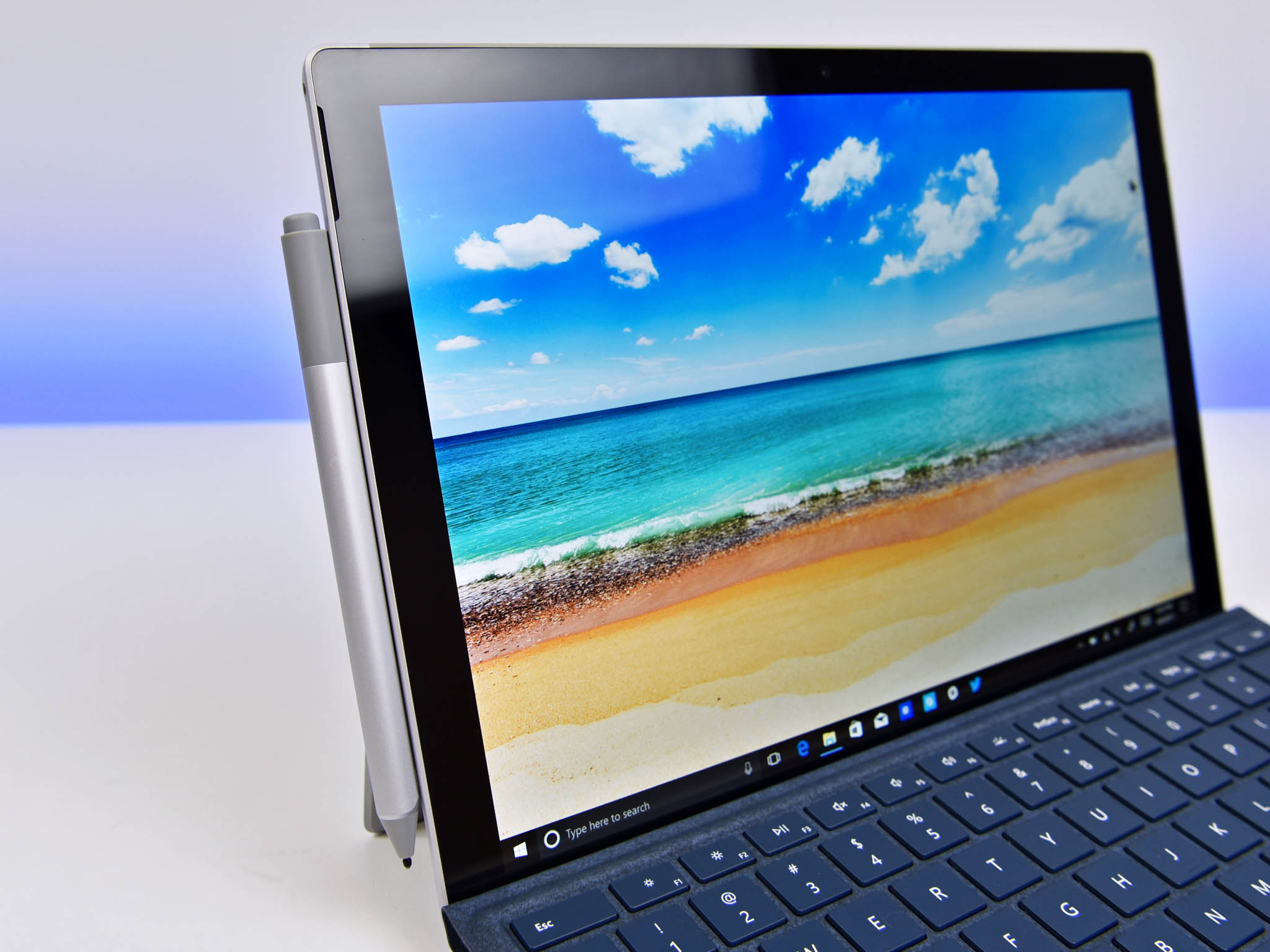
Other physical changes to the pen include the removal of the shirt clip, which gives a larger magnetic side to attach to the Surface Pro. It works well, and while it may still get knocked off in your bag, it will be harder to so.
Inking has always been a focus of the Surface line, and Microsoft is keeping Surface Pro on its toes. It's a real joy to use despite the higher $99 price point.
It is also worth noting that you can now use the Surface Dial directly on the display just like Surface Studio.
What's new is the same as before
Microsoft Surface Pro 2017 Type Cover
The refreshed Surface Type Cover line is more about minor improvements rather than a complete redesign. The Surface Pro 4's Type Cover is easily the best Microsoft created, so it makes sense to bring that forward with the new Alcantara-decked ones for this year. This synthetic plastic fabric has a similar feel to suede, but without the environmental impact of raising and slaughtering cows to make leather. It's warm and inviting, and the new color options (Burgundy, Cobalt Blue, and Platinum) match the Surface Laptop, Surface Pen, and even Surface Arc Mouse.
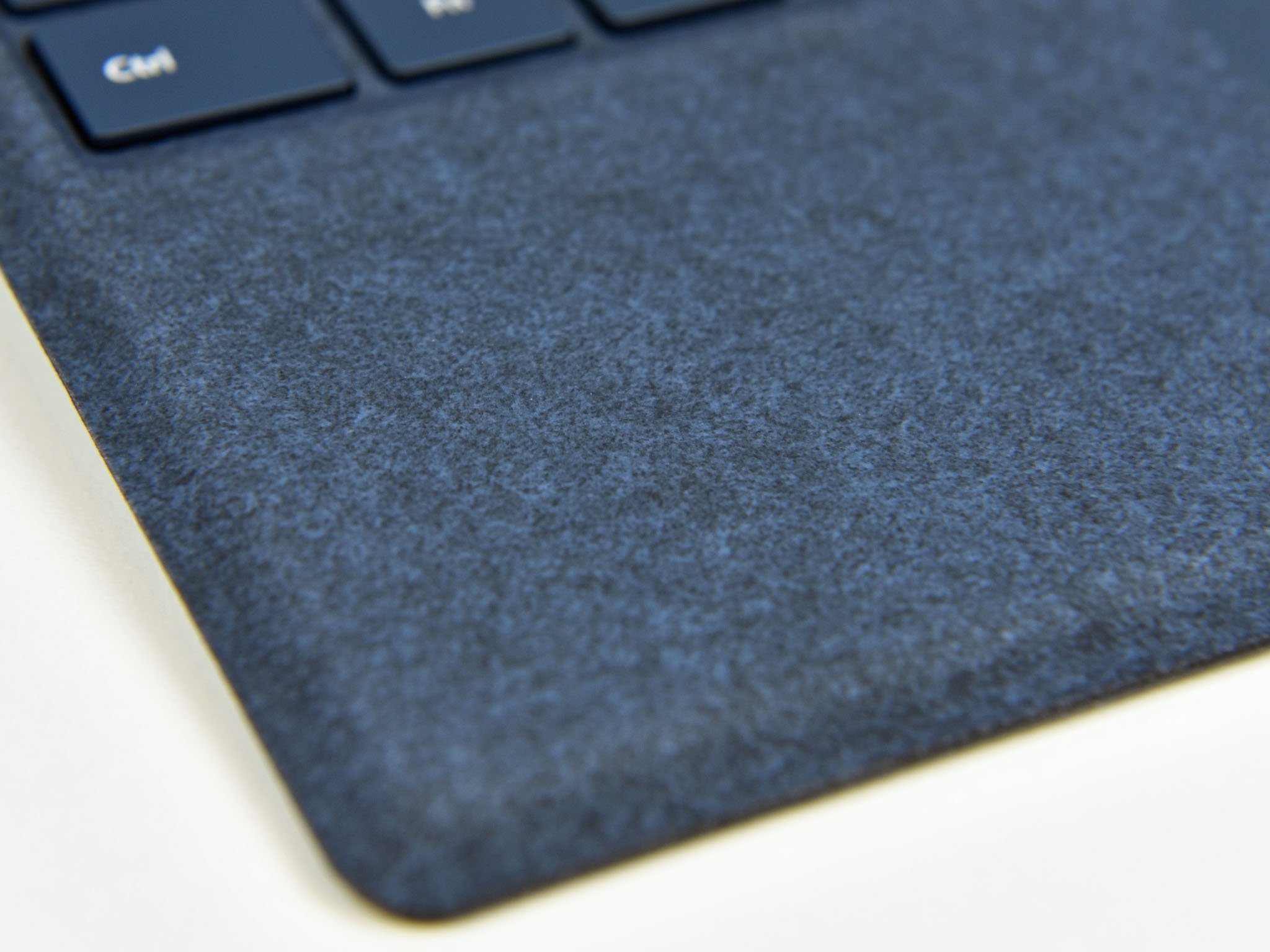
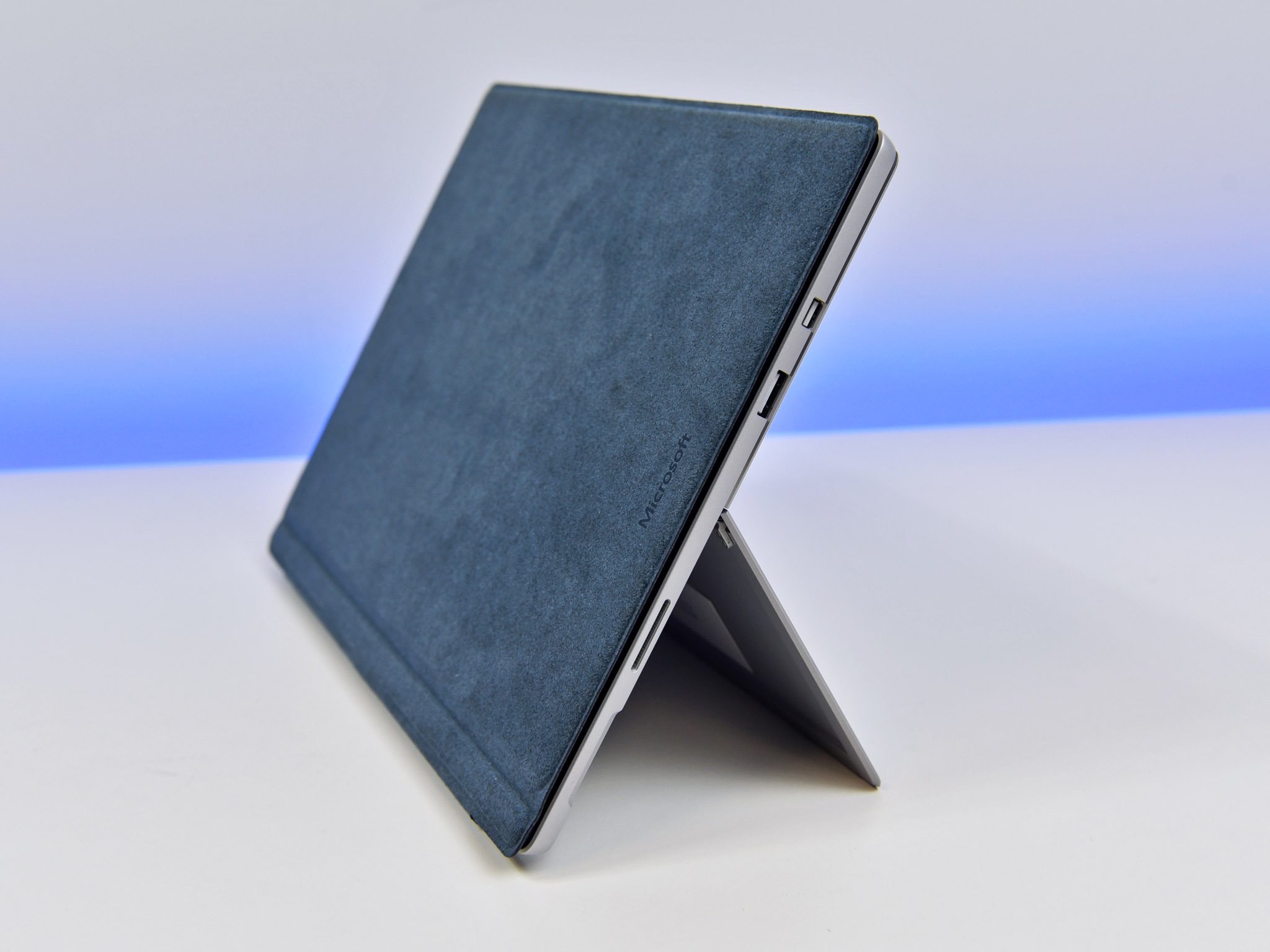
There are concerns about Alcantara longevity, but at least with a Surface Pro, you could always get a new Type Cover (versus Surface Laptop, where it is part of the keyboard deck). I like the feel — it looks great, feels fantastic, and simply works well. The new color options are muted, but elegant.
Everything you need to know about Alcantara
Key travel is still 1.3mm (Surface Laptop is a hair deeper at 1.5mm), and the actuation and response feel as great as before. I had no problem typing on the new Type Cover, and enjoyed it as much as the old ones. It's basically the same as before, anyway.
There are some other improvements, including dedicated keys for display brightness, instead of a secret key combo for that function. There are the volume, play/pause, and keyboard backlight keys as well. Backlighting is still three stages and works well in low-light situations.
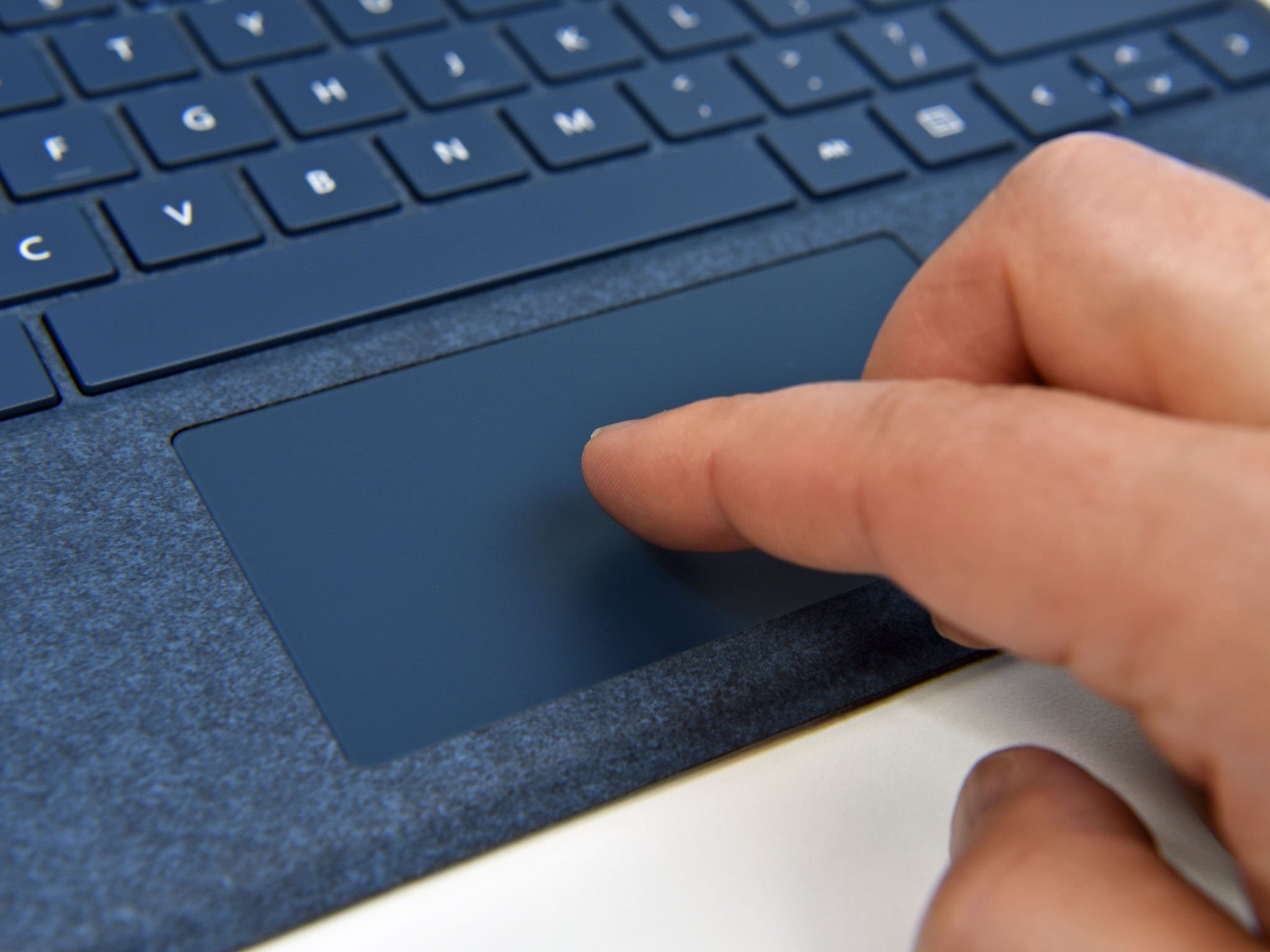
Microsoft made some minor improvements to the Precision trackpad as well, but it appears to be more superficial. The size is the same, and I couldn't pick up on any performance differences. Nonetheless, it works perfectly, and while it could always be larger, it is enjoyable to use for extended durations.
The magnets that hold the Type Cover to the Surface Pro feel stronger, though this could be in my head. Either way, you really must tug to remove the Type Cover.
Microsoft nearly perfected Surface Type Cover with Surface Pro 4. This year's version, while not radically different, has no glaring flaws. The added display brightness keys, new colors, and Alcantara just make it all better.
Turn it up (a bit)
Microsoft Surface Pro 2017 audio
Microsoft rightly puts the dual stereo speakers at the edge of the Surface Pro's display. The placement means they are front-firing, with excellent fidelity and stereo separation.
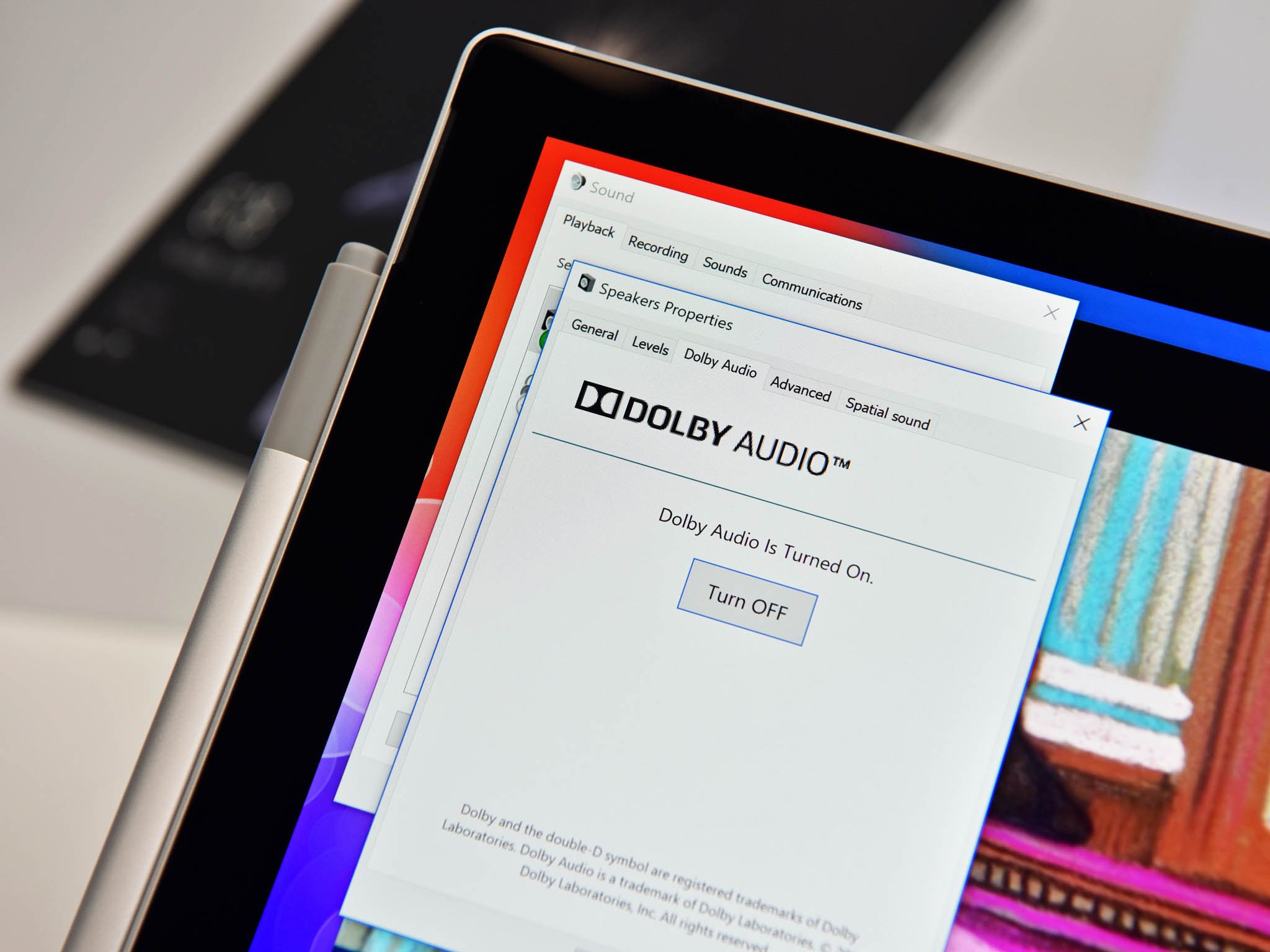
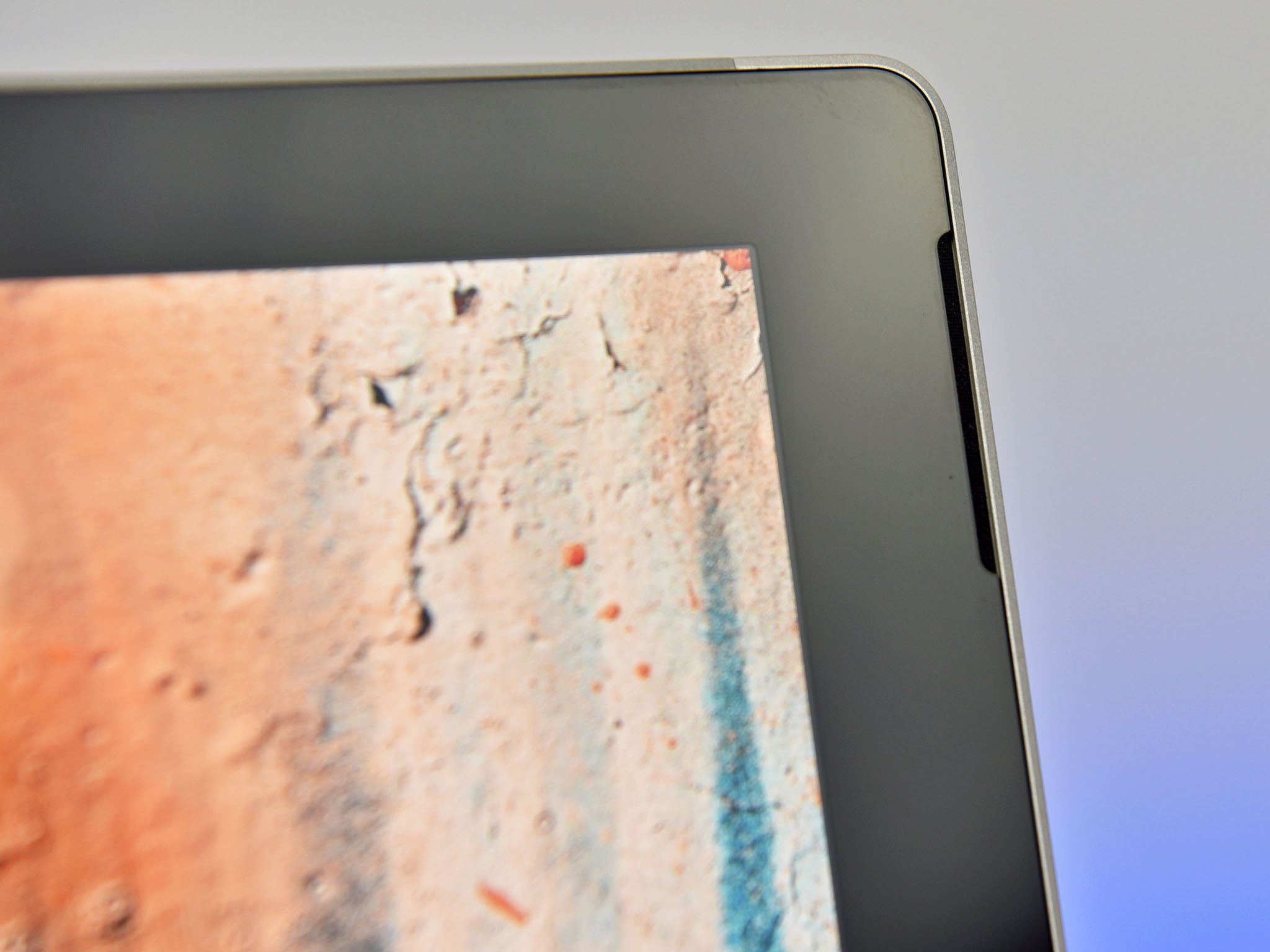
The speakers with Surface Pro are improved over the Surface Pro 4 — they're larger and more powerful, along with Dolby Audio Premium support. The two companies are working closely together across Windows 10 and even Xbox One to bring Dolby support to the hardware and software.
These minor improvements result in excellent audio quality for music, movies, and Skype calls. While Surface Laptop has richer sound thanks to its larger size and speaker placement, the Surface Pro is quite impressive for its size. Audio is crisp, clear, and loud without distortion.
Instant on
Microsoft Surface Pro 2017 Windows Hello and Cameras
A lot of work went into Windows 10 and Surface Pro to make resuming from sleep/standby "instant." The idea is to make the PC more tablet or smartphone-like so users can just get to work, and I think Microsoft has mostly succeeded.
Tapping the power button or keyboard to wake the Surface Pro turns on the display, activating the face recognition camera (Windows Hello) and logging in the user in about 2.5 seconds. It is remarkably fast. By the time you remove your hand from the power button, you are ready to work. It's a delight to be able to sit down, press a button, and be ready to go.
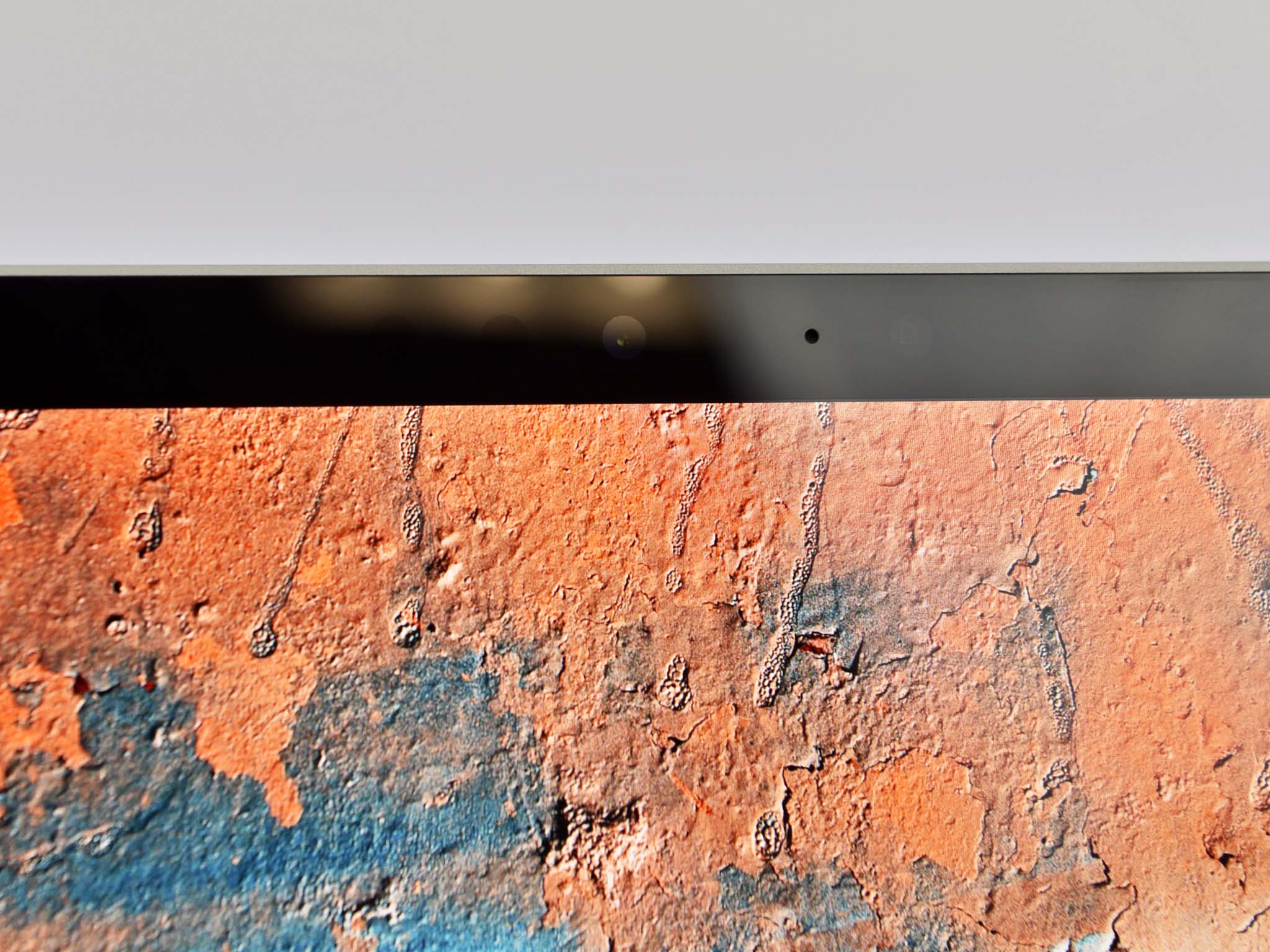
The Surface Pro will still hibernate, which takes longer to wake from than sleep, so there is still some residual "this is a PC" experience. However, Microsoft noted that Surface Pro learns when you use it so that it should not hibernate during your frequently used work hours.
The IR lenses for Windows Hello are now blacked out letting them blend into the display bezel. A minor detail, but Surface is about minimalism.

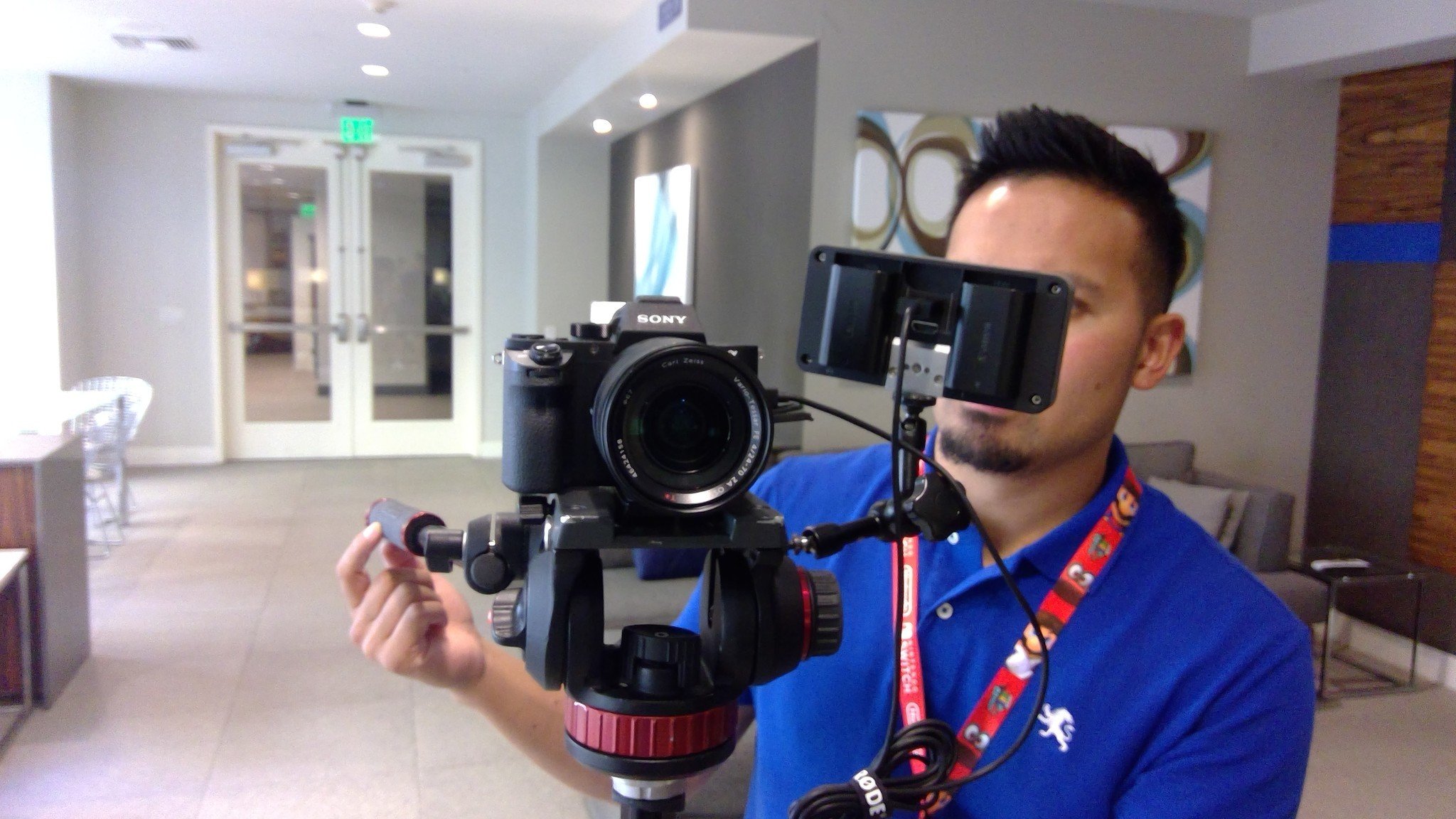
The front-facing camera is still 5MP with 1080p resolution. It is very bright and looks fantastic in video – better than most premium laptops. The rear 8MP autofocus camera with 1080p HD video camera is surprisingly useful for classrooms to snap pictures of whiteboards and to use Office Lens to save the content. And sure, you can even use it to snap a photo in a pinch and not cringe at the quality.
A compact Core i7 monster
Microsoft Surface Pro 2017 benchmarks
While I feel the new fanless Core i5 Surface Pro is the sweet spot, the dual-core Core i7-7660U and Iris Plus 640 Graphics are fantastic combos — especially in a device that weighs just 1.73lbs (784g).
CPU
For synthetic benchmarks, the Core i7-7660U is a massive performer, even beating the quad-core Core i7-7700HQ found in the Dell XPS 15 in Geekbench's single-core tests.
Geekbench 4.0 benchmarks (higher is better)
| Device | CPU | Single core | Multi core |
|---|---|---|---|
| Surface Pro 2017 | i7-7660U | 4,513 | 9,346 |
| Dell Latitude 5285 | i7-7600U | 4,635 | 9,289 |
| Dell XPS 15 (9560) | i7-7700HQ | 4,503 | 13,587 |
| Samsung Notebook 9 15 Ext | i7-7500U | 4,316 | 8,320 |
| Lenovo X1 Carbon | i5-7300U | 4,139 | 8,311 |
| Dell XPS 13 (9360) | i7-6560U | 4,120 | 7,829 |
| HP Spectre 13 | i7-7500U | 4,100 | 7,469 |
| Surface Book | i7-6600U | 3,977 | 7,486 |
| Surface Laptop | i5-7200U | 3,725 | 7,523 |
| Surface Pro 4 | i5-6300U | 3,319 | 6,950 |
GPU
In a test aimed more at the graphics capability, the Intel Iris Plus 640 Graphics also perform exceptionally well.
Geekbench 4.0 OpenCL (higher is better)
| Device | Compute score |
|---|---|
| Surface Pro 2017 | 30,678 |
| HP Spectre x360 15 | 28,868 |
| Samsung Notebook 9 15 Ext | 23,207 |
| Dell Latitude 5285 | 21, 921 |
| HP EliteBook x360 G2 | 21,512 |
| Dell XPS 13 (9360) | 19,410 |
| Surface Laptop | 19,256 |
| Surface Book HD520 | 18,197 |
| Surface Pro 4 | 17,395 |
What makes that 30,678 GeekBench OpenCL score for Surface Pro impressive is it beats the HP Spectre x360 15 and Samsung Notebook 9 15 Ext — both with NVIDIA GeForce 940MX discrete GPUs. Users who need rendering power or engage in casual gaming will like the punch of the high-end Surface Pro.
SSD
Unlike the 256GB Surface Laptop, Microsoft did the 512GB Surface Pro well with its solid-state drive (SSD). The unit reviewed here included a Samsung PM971 (KUS040202M) SSD and its performance is impressive:
CrystalDiskMark (higher is better)
| Device | Read | Write |
|---|---|---|
| Surface Pro 2017 | 1,284 MB/s | 963 MB/s |
| Lenovo X1 Carbon | 1,518 MB/s | 1,188 MB/s |
| Samsung Notebook 9 Ext | 1,365 MB/s | 1,213 MB/s |
| HP EliteBook x360 G2 | 1,129 MB/s | 916 MB/s |
| Dell XPS 13 (9360) | 1,287 MB/s | 794 MB/s |
| HP Spectre x360 15 | 1,128 MB/s | 862 MB/s |
| Surface Book | 1,018 MB/s | 967 MB/s |
| Surface Laptop | 423 MB/s | 237 MB/s |
While not quite the fastest SSD, the Samsung PM971 is an excellent solution for the Surface Pro. For those who are disappointed with the Surface Laptop's SSD, you'll like what Microsoft is using here.
Caution should be noted, though: PC makers tend to use a multitude of SSDs in production due to supply availability. So not all Surface Pros may be using this SSD – indeed, it may even be limited to the high-end Core i7 model, which makes some sense.
PCMark
Looking at PCMark Home Conventional – which is an overall performance test - the new Surface Pro also does well.
PCMark (Home Conventional 3.0)
| Device | Score | Comparison |
|---|---|---|
| Surface Pro 2017 | 3,055 | Better than 57 percent of all results |
| Dell Latitude 5285 | 3,079 | Better than 57 percent of all results |
| Samsung Notebook 9 15 Ext | 2,998 | Better than 57 percent of all results |
| Lenovo X1 Carbon Core i5 | 2,965 | Better than 57 percent of all results |
| HP EliteBook x360 G2 | 2,916 | Better than 52 percent of all results |
| Dell Latitude 7280 | 2,829 | Better than 52 percent of all results |
| HP Spectre x360 15 | 2,472 | Better than 41 percent of all results |
| Surface Laptop Core i5 | 2,494 | Better than 40 percent of all results |
Compared to the Surface Book's last-generation Core i7-6600U, the new Surface Pro is a significant jump in performance. The similarly specced and business-oriented Dell Latitude 5285 also does quite well compared to the Surface Pro.
Overall, the Surface Pro with a Core i7 and Intel Iris Plus 640 is a surprisingly powerful combination, especially with this form factor. While you will pay a lot for the privilege at least, Microsoft is fully utilizing the best tech around for maximum performance.
Work all day
Microsoft Surface Pro 2017 battery
Despite the impressive benchmarks for the Core i7 model, the Surface Pro stays surprisingly cool under CPU and GPU duress.
During thirty minutes of benchmarking with simulated photo editing and casual gaming, the Surface Pro with Core i7 never went over 104 degrees F (40 degrees C) on the back; the display stayed at just 100 degrees F (38 degrees C), which is warm but not hot to the touch. That is quite remarkable with the performance attained from the CPU and GPU, and it shows Microsoft did do a lot of thermal engineering.
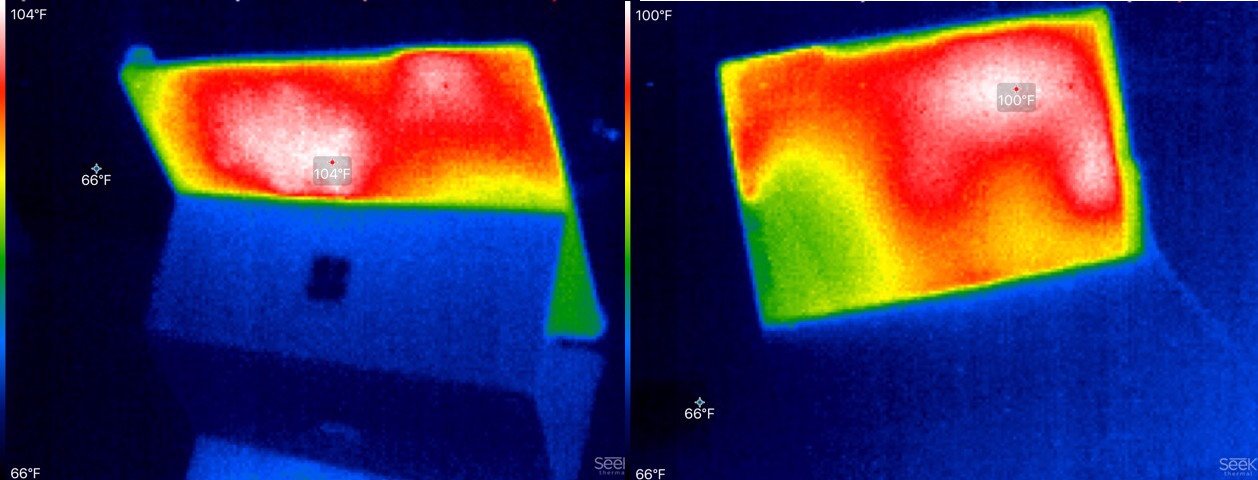
Likewise, for fan noise. During the thirty minutes of benchmarking the fan did come on and was audible, though barely above a whisper with no whine or high-pitch noises.
The fans on the Surface Pro are sooooo quiet.
In a room with ambient noise, you would struggle to hear the Surface Pro even when the fan is running. That is a momentous change from the infamous "hiss" of previous Surface Pro devices. At no point did I ever find the fan noise annoying. During non-intensive tasks, the fan is either not running, or not audible enough to notice. When just browsing the web, or using the Windows Store app, you could almost convince me the Core i7 version was also fanless.
For battery life, Microsoft claims 13.5 hours using a closed-loop video test. My real-world usage puts it closer to eight hours – maybe slightly more – which is a significant bump from the Surface Pro 4, which peters out around six hours.
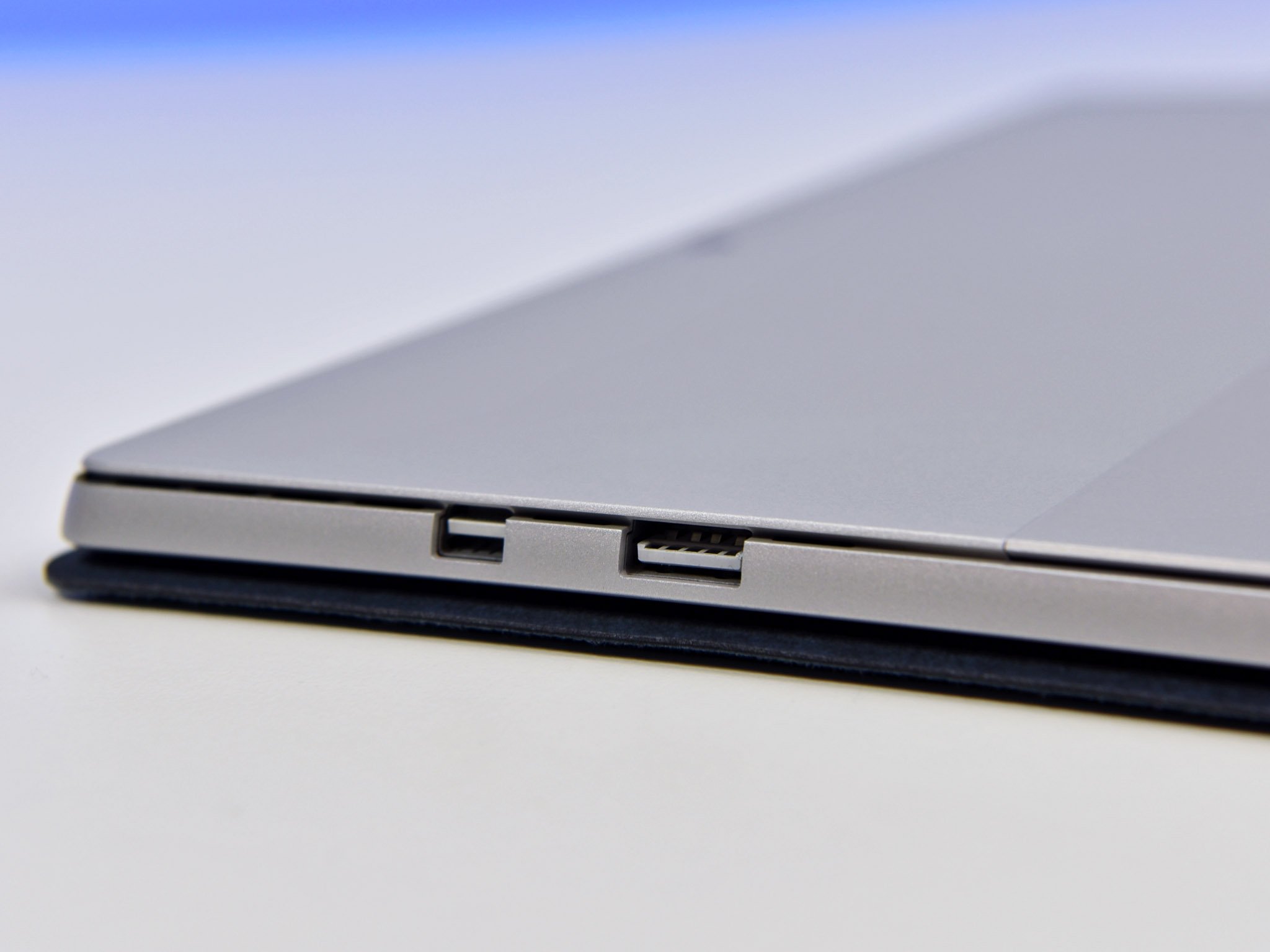
On a cross-country flight from Boston to L.A., I watched a two-hour movie, played about 15 minutes of Pinball FX2, and spent a couple of minutes just playing with the OS. I still had 71 percent battery left when I landed. On another occasion, after the Xbox E3 liveblog, which was just over 2.5 hours (including one hour of waiting for the event to start) I had 73 percent battery left from a full charge.
In using Surface Pro 3 and Pro 4 extensively, this is the first time I felt like I could go to work without the AC charger (which is also smaller this year).
Just as importantly is stand-by battery life. If you charge the Surface Pro to 100 percent and leave it overnight (or even a few days), the next time you turn it on it will still be at 100 percent. That, too, is a welcome change.
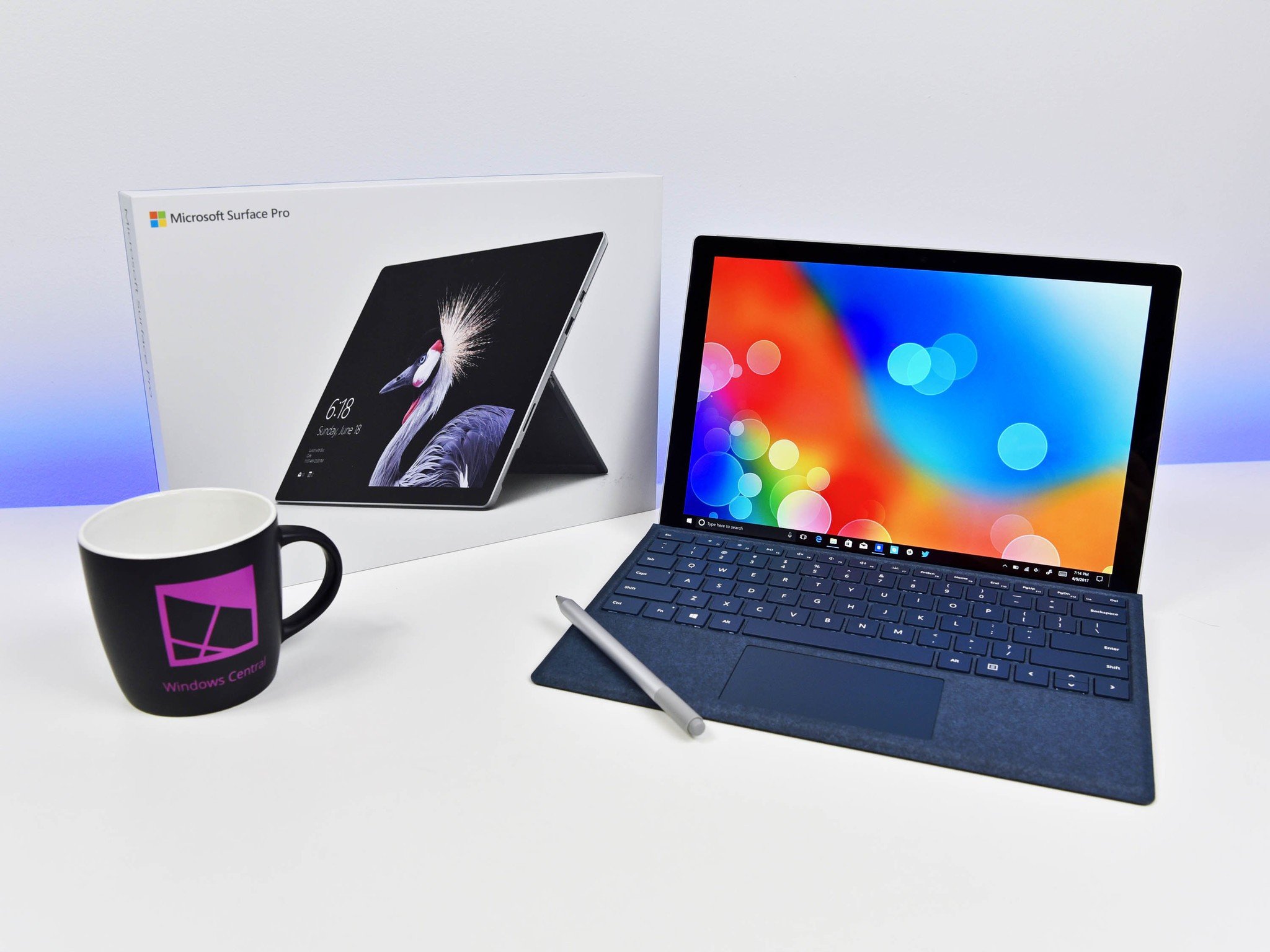
The sum of its parts
The Bottom Line: Microsoft Surface Pro 2017
The Surface Pro 4 was a momentous achievement for Microsoft, but the device had a very rough start due to issues with its Intel "Skylake" processor. Even once those problems subsided, the device still ran hot, had a hissing fan, and battery life always approached being acceptable, but often fell short for users when compared to the competition.
Microsoft has seemingly solved these issues – and more – with the new Surface Pro for 2017. Sure, it may look the same from a distance, but it is the sum of its parts that makes it a delightful experience. I confess all this despite not being a Surface Pro fan. I like the device, but I gravitate towards traditional laptops. That changed with the new Surface Pro, and here is why:
- Battery life is all-day now and doesn't deplete in stand-by.
- It doesn't get hot, nor is the fan loud.
- It feels better to hold and use.
- Instant-on makes you want to use it often.
- The display looks fantastic with the new Enhanced color profile.
I could also throw in what a beast the Core i7 model is, rivaling many of my laptops. And while I'm still not a hardcore Surface Pen user, it's so good to use I want to do more with it.
Microsoft managed to cover all the bases with Surface Pro to make it a very versatile – but just as importantly – a reliable machine. It is the first time I felt the lines between powerful PCs and tablets definitively blurring.
Should Surface Pro 3 users upgrade?
Absolutely. There is just too much that is new and improved that the jump is well worth it if you can swing the cost.
Should Surface Pro 4 users upgrade?
While not a big a leap, if the battery life or fan noise of the Surface Pro 4 is a disappointment, then the 2017 Surface Pro will be a welcome upgrade. If you do much inking, it's an essential upgrade. Either way, there's the cost to consider — your Surface Pro 4 is a year-and-a-half old at most and is still plenty capable.
The first Surface for you?
If you have never owned a Surface Pro but have thought about it, then this is the one to get.
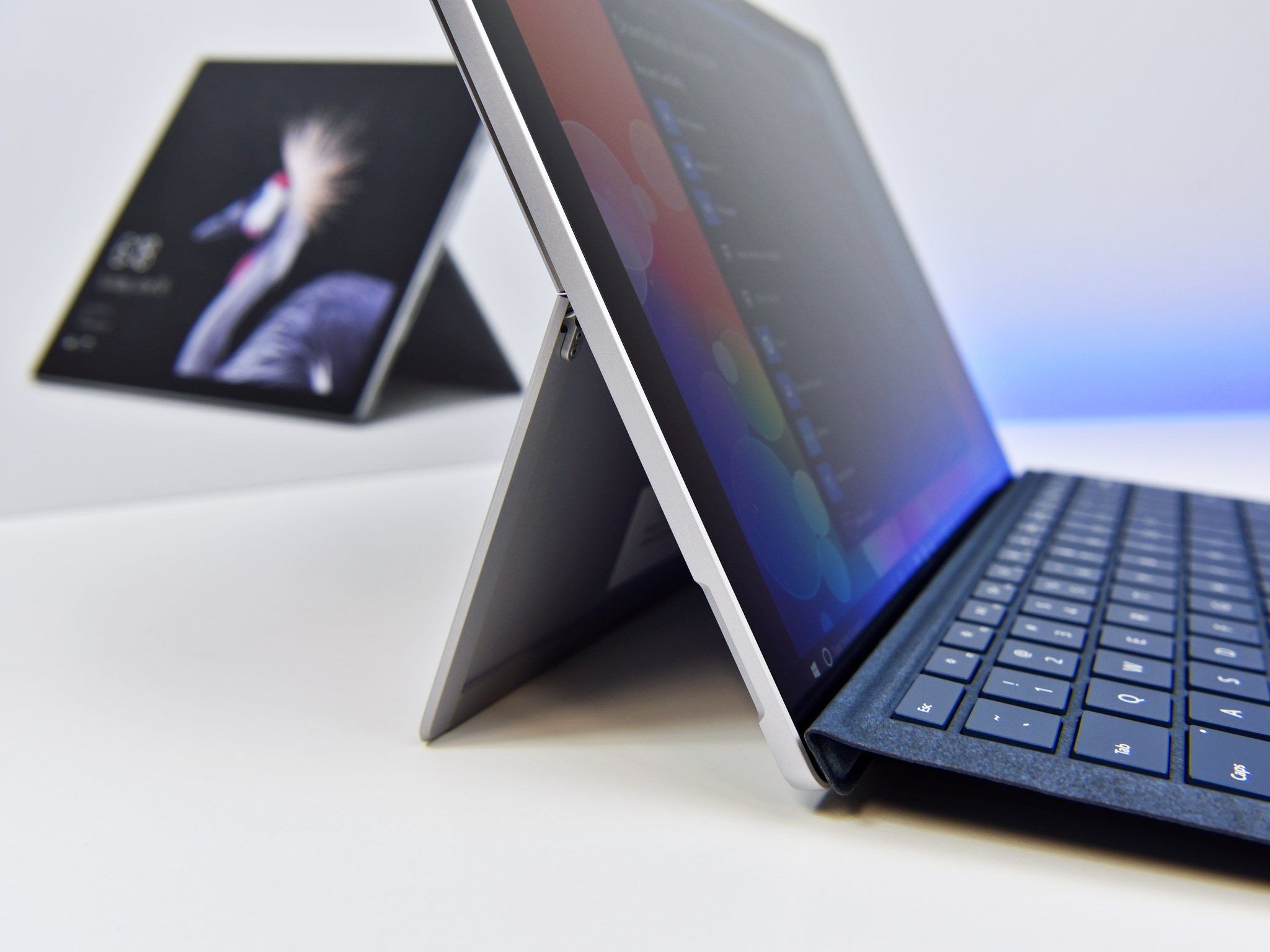
Microsoft convinced many that the Surface Pro is a solution to the tablet versus laptop problem. It took a few years to get there, but in 2017 that vision has never been more clearly articulated. The Surface Pro is the culmination of the previous releases with nothing but improvements all around. It's astonishingly beautiful, reliable, and delightful to use. Whether you can justify the cost – which is admittedly not cheap, nor value-driven – is another question. But the quality and experience are never better with the new Surface Pro.
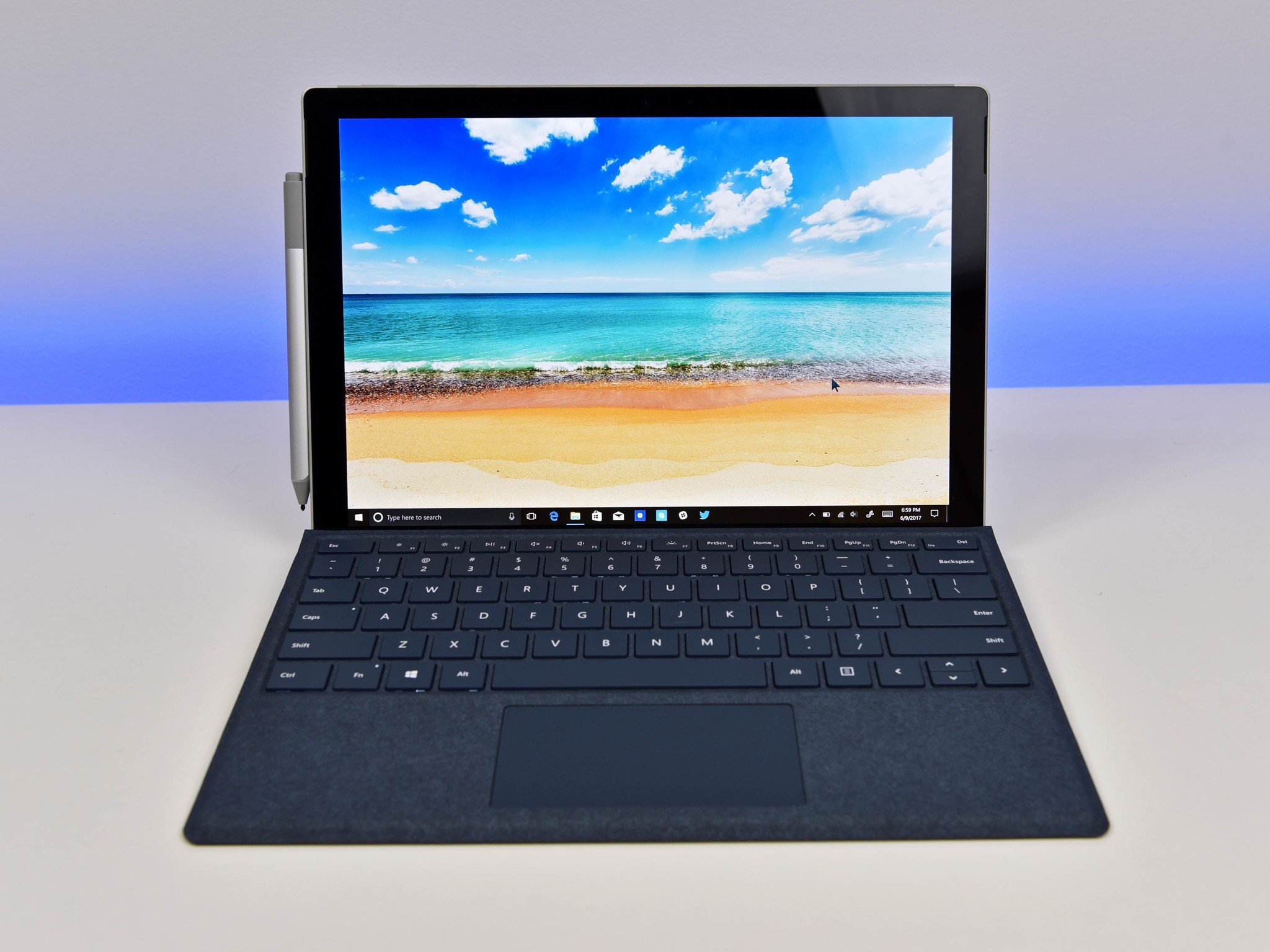
Surface Pro for 2017 is Microsoft vision of modern computing, and it's a lot of fun.
The new Surface Pro is now available in 26 markets world-wide.
Pros:
- Solid battery life and outstanding performance.
- Beautiful display with new color profiles.
- New Surface Pen is a joy.
- Stays cool and barely makes any fan noise.
- Instant on is instant awesome.
Cons:
- Type Cover and Pen not included — gets expensive quickly.
- No USB Type-C or Thunderbolt 3.
- 2-in-1 kickstand design isn't for everyone.

Daniel Rubino is the Editor-in-chief of Windows Central. He is also the head reviewer, podcast co-host, and analyst. He has been covering Microsoft since 2007 when this site was called WMExperts (and later Windows Phone Central). His interests include Windows, laptops, next-gen computing, and wearable tech. He has reviewed laptops for over 10 years and is particularly fond of 2-in-1 convertibles, Arm64 processors, new form factors, and thin-and-light PCs. Before all this tech stuff, he worked on a Ph.D. in linguistics, performed polysomnographs in NYC, and was a motion-picture operator for 17 years.
